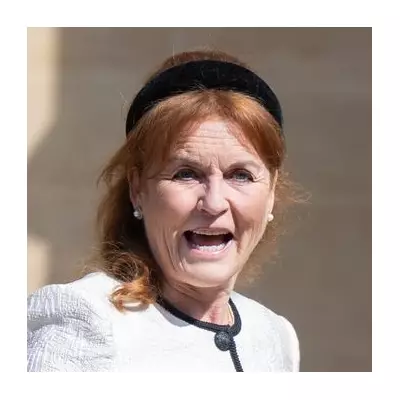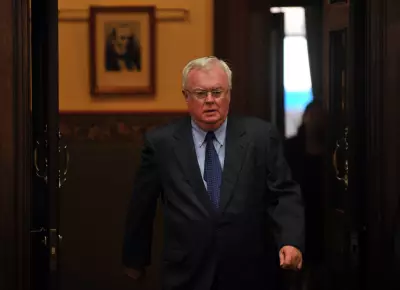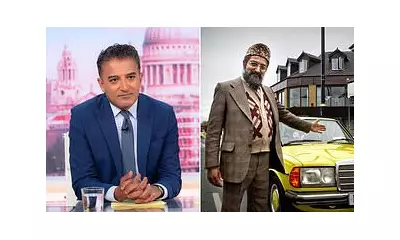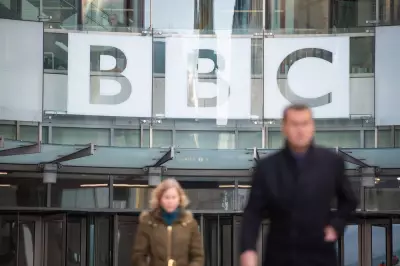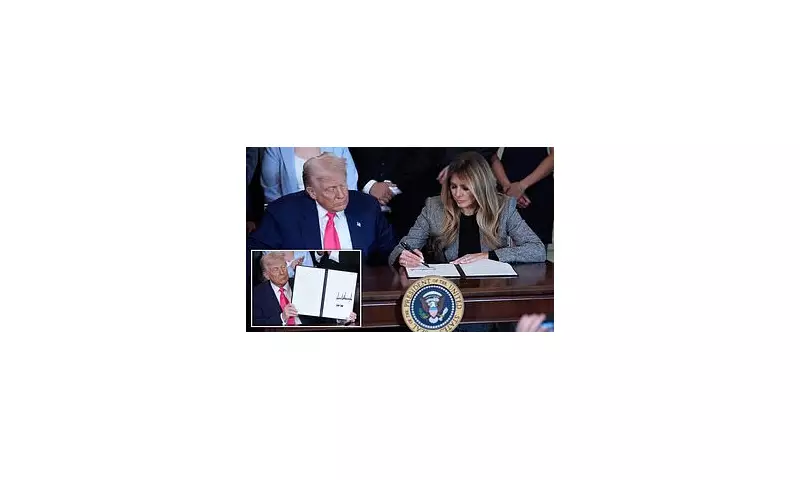
First Lady Makes Unprecedented Move in the White House
In an extraordinary moment at the White House on Thursday, First Lady Melania Trump was invited by President Donald Trump to add her signature to an executive order, an act without precedent for a presidential spouse. The order, central to the First Lady's own agenda, focuses on providing crucial support for teenagers transitioning out of the foster care system.
A Ceremonial Gesture with Historic Weight
The event unfolded as the president first signed the Fostering the Future Executive Order, which aims to develop private-public partnerships to aid youth leaving foster care. In a notable departure from protocol, he then asked his wife to also pen her signature on the document. President Trump proudly highlighted that both signatures were authentic, bragging that "neither of them used an autopen."
While Mrs. Trump's signature holds no official power and is purely ceremonial, it solidifies a historic milestone. There is no prior record of a first lady ever signing an executive order. This follows another precedent set in May, when she became the only first lady to sign a bill into law, the Take It Down Act, which protects victims of revenge porn.
Focus on Foster Care and Workforce Development
Following the signing, the First Lady delivered brief remarks explaining the significance of the initiative, which her husband praised as especially impressive "for someone that speaks five languages." Mrs. Trump is fluent in Slovenian, English, French, German, and Italian, with knowledge of a Serbo-Croatian legacy language.
The executive order launches a new directive under her Be Best initiative, specifically designed to help support workforce and career development and secure educational and scholarship opportunities for children in foster care.
Event Overshadows Government Reopening
This press event was President Trump's first public appearance after he signed a resolution the night before to end the longest federal government shutdown in US history. The continuing resolution funds most of the government through January 30, 2026, with full-year appropriations for veterans benefits, SNAP assistance, and military construction.
Although the president did not comment on the deal that reopened the government, he did divert attention to upcoming renovations in the East Wing. He indicated that a new ballroom, capable of hosting thousands of people, would be constructed behind the East Room, a project that has drawn criticism for its timing and cost during the recent shutdown.
The Senate had passed the short-term funding bill on November 11 in a 60-40 vote, with the House finally agreeing in a 222-209 late-night session on Wednesday. President Trump remained in the Oval Office until 10:30 p.m. to sign the resolution, officially concluding the record-breaking shutdown.


